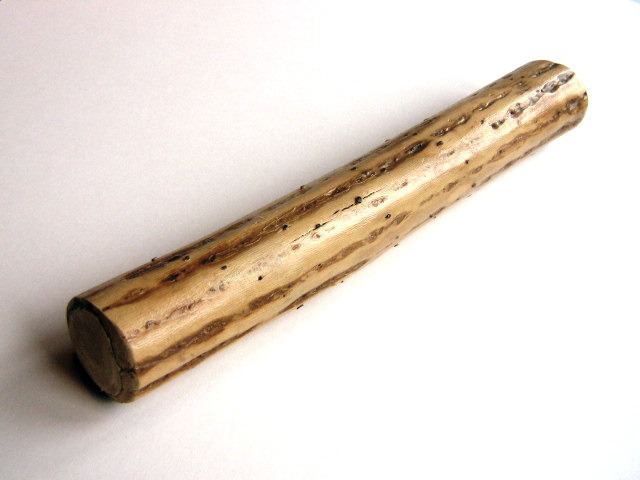Classification percussion instrument | ||
 | ||
Hornbostel–Sachs classification 112.13+133.1(vessel rattle with friction) Inventor(s) uncertain, some theories include: Chile, Mapuche, Southeast Asia, Africans and African diaspora | ||
A rainstick is a long, hollow tube partially filled with small pebbles or beans that has small pins or thorns arranged helically on its inside surface. When the stick is upended, the pebbles fall to the other end of the tube, making a sound reminiscent of rain falling. The rainstick is believed to have been invented by the Mapuches and was played in the belief it could bring about rainstorms. It was also found on the Chilean coasts, though it is not certain if it was made by the Incas. Rainsticks are usually made from any of several species of cactus. The cacti, which are hollow, are dried in the sun. The spines are removed, then driven into the cactus like nails. Pebbles or other small objects are placed inside the rainstick, and the ends are sealed. A sound like falling water is made when the rainstick has its direction changed to a vertical position.
Although it was thought to have been invented in Chile, many similar instruments can also be found in Southeast Asia, Australia and Africa, where it is often made using bamboo rather than dried cactus.
Two species of cactus used are: Eulychnia acida and Echinopsis pachanoi.
Rainsticks may also be made with other common materials like paper towel rolls instead of cactus, and nails or toothpicks instead of thorns, and they are often sold to tourists visiting parts of Latin America, including the Southern United States.
